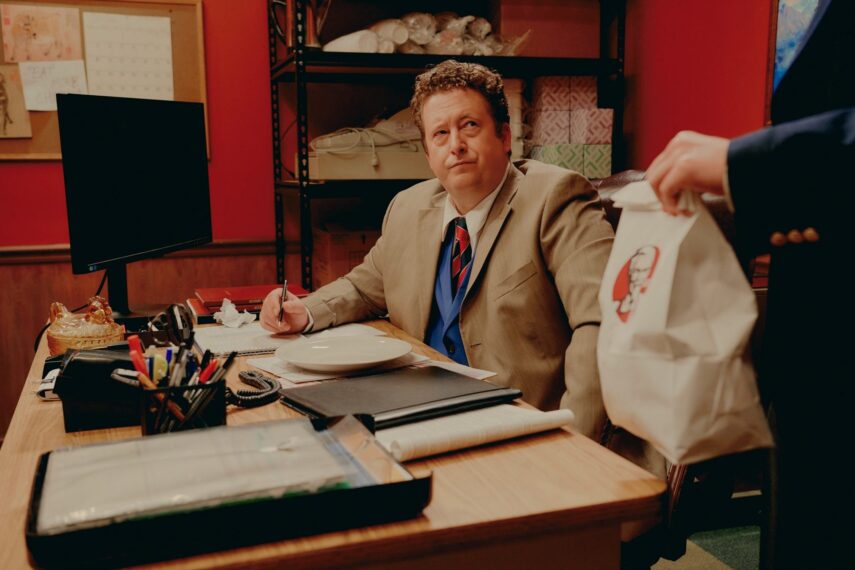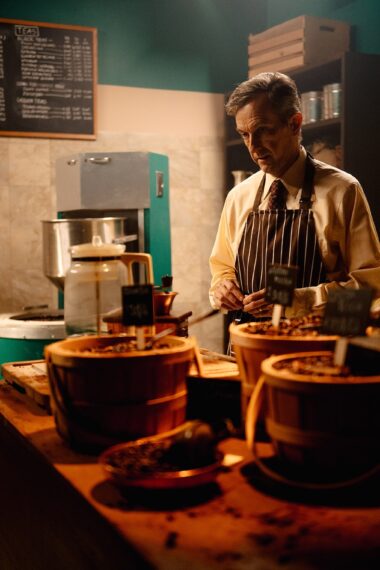
If you have hunger pangs for more episodes of The Food That Built America, you’re in luck because Adam Richman is serving up another fresh batch of delicious origin stories. The menu for season 4 tackles a wide assortment of products and brands from Chick-Fil-A and Pop-Tarts to Kool-Aid and buffalo wings to, yes, even Cat Chow. For Richman, there is so much to feast upon.
“This season is fascinating because we not only focus on certain specific meals but actually break away from just iconic brands or iconic foods within those brands going into pet food, spirits, sporting goods, coffee,” the culinary expert tells TV Insider. “It’s really adding great dimensionality.”
Here the Man v. Foodie gives us a taste of what you’ll want to sink your teeth into this season.
The first episode explores the history and innovation behind breakfast in a box. One of the takeaways for me is really how important marketing and a name truly are to a product’s success.
Adam Richman: Those are two brilliant observations on your part. I also think it’s really cool to see sometimes how a shift in technology or society changes what succeeds. For example, the advent of the microwave suddenly made it so kids could make their own meals. Parents didn’t have to worry about knives or forks. Suddenly there is a whole new sector. The advent of the microwave coincided with when both parents were working. Advertisers were advertising to children with Reagan’s FCC saying you can advertise to them. Then you’re seeing every cartoon having its own cereal. This season you’ll see how companies realized they were leaving money on the table with the toaster…Suddenly breakfast as we know it is changed because of innovation. It’s remarkable how culture and food come together. Every anthropologist, when they study society, what do they study? How they ate.

History Channel
Food is a language in itself.
Exactly! You just became my favorite human being. I’ve always said that is what is a hypnotic allure to food to me. The fact is it is a language. It’s a language that is ever-changing and will continue.
There is also an episode on holiday treats. I feel that topic could be its own episode. How hard was it to jam-pack that one?
Difficult! Plus, also as someone who is a proud Jewish man, it’s funny because my perspective is very different from people who celebrate Easter, and Christmas. For me, as much as I respect other faiths and read the New Testament, and know the basis for each holiday, my connection to these foods is simply food. It’s kind of cool to separate the food culture of a holiday from the holiday.
There is this other thing where candy corn may or may not be what people dig and can be extremely polarizing. It’s also labor intensive, difficult to make, dangerous to make, and incredibly inventive. We take them for granted. Peeps are arguably one of the most polarizing treats ever. The crafting of them and how they initially had their wings spread and realized a little tweak or pull of the marshmallow and a couple of dots and colored sugar you now have these marshmallow cornish hens at the front of the store of Target.

History Channel
What do you think was the most eye-opening about the buffalo wings story?
Great question. As we have this conversation in 2023, we had a point where our nation experienced a shortage of them. For perspective, this is a part of the chicken decades ago, where wings were used for stocks, soups, and sauces. They were never sought after as part of the chicken. Now in a half-century, it has slipped to where Wingstop is using thighs because it couldn’t get its hands on wings. The demand is incredible. The sheer numbers knowing the average American consume 18,000 of them in a lifetime. Roughly a billion would get consumed on Super Bowl Sunday alone.
The most eye-opening thing was John Young, who was making a version of a wing known in Washington D.C. with what is called mumbo sauce. Sweet, spicy, red sauce on wings. John Young had to leave Buffalo in the 1960s when racial tensions were high with the riots. In his absence, the Bellissimos cemented their legacy as creators of the buffalo wing. It’s so cool in the middle of Black History month that this entrepreneur John Young is finally going to get his story out there on History Channel, and I get to be a conduit for that. That is really special.
Is there one particular upcoming episode you’re excited for viewers to see?
I’m a coffee junky. I collect containers for every city I go to. The guys who initially founded Starbucks learned how to roast coffee from the founder of Peets’. The coffee episode is big. You’ll see how [former Starbucks Chairman and CEO] Howard Schultz makes good and thinks outside the box. The peanut butter episode is also really cool just seeing the role politics and wartime and scarcity have on our pallets. Advertising also. I didn’t know Jif was launched with a mascot called the Jifaroo which was a peanut butter-loving kangaroo.
I love the spirits one. Prohibition changed America as we know it. It changed again when it was repealed…Cuervo and Smirnoff shaped culinary American identity as much as the food I like to think. The fact Smirnoff had a successful advertising campaign essentially telling you to drink Smirnoff at lunch because you won’t have alcohol on your breath. That’ is the perfect thing for a liquid lunch. How do you sell a Russian spirit that nobody has heard of in the middle of the Cold War? Like that. So coffee, spirits, and peanut butter are good ones this season.
The Food That Built America season 4 premiere, February 19, 9/8c, History Channel
















:quality(85):upscale()/2023/11/29/969/n/1922564/a1b085526567b82012d414.20726050_.png)

:quality(70):extract_cover():upscale():fill(ffffff)/2025/01/30/866/n/1922564/5de1da7d679bd74385a671.79574530_Screenshot_2.png)







